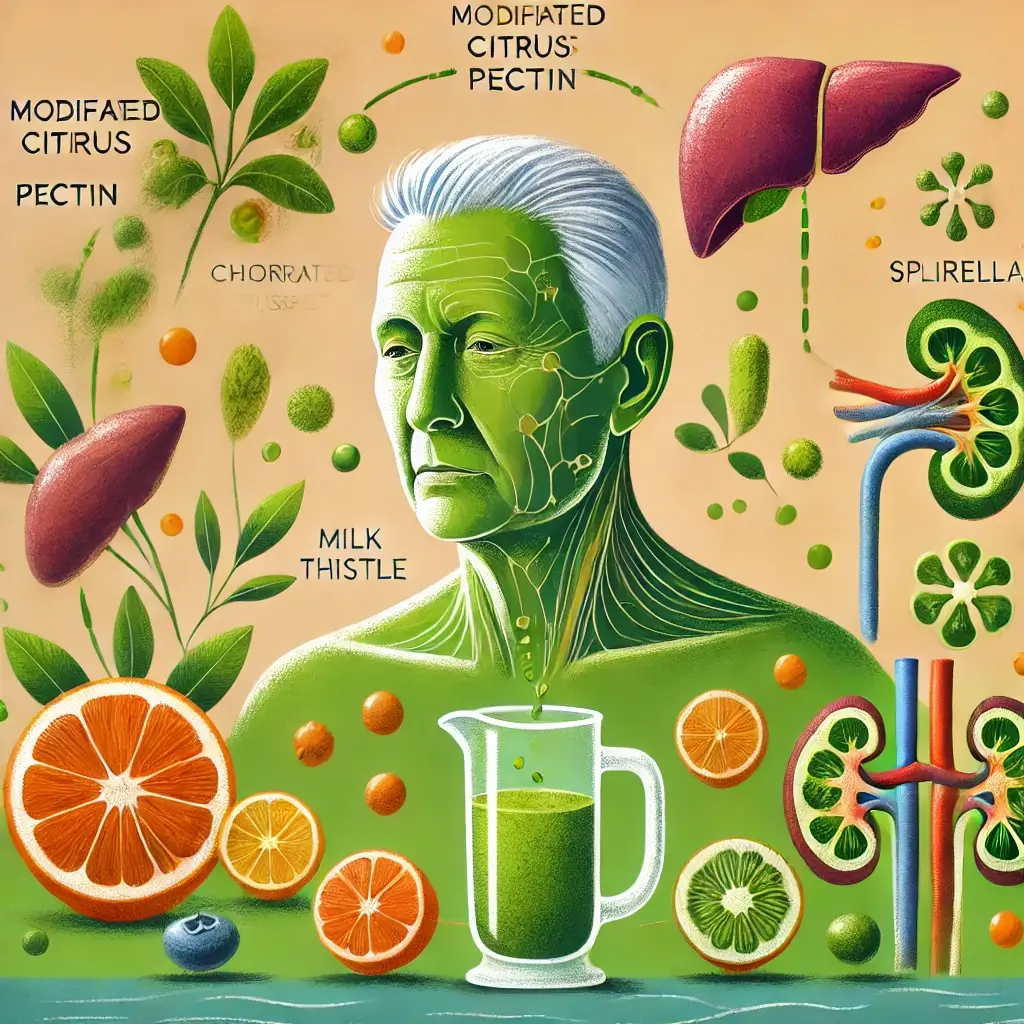The Critical Challenge of Toxin Elimination in Aging Bodies
As the human body ages, its ability to effectively eliminate toxins diminishes, posing an increasing health challenge for older adults, particularly those over 65. Heavy metals such as mercury, lead, cadmium, and arsenic are ubiquitous in the environment, accumulating over a lifetime through air pollution, contaminated food, water supplies, and medical interventions like amalgam dental fillings. These metals have been linked to a range of chronic health issues, including neurological decline, cardiovascular disease, chronic fatigue, and impaired immune function (Anderson et al., 2023).
Why Traditional Detox Methods Can Be Dangerous for Seniors
For seniors, the stakes are even higher. The body’s primary detoxification organs—such as the liver and kidneys—naturally experience reduced function with age. As a result, aggressive detoxification approaches that may be tolerable in younger individuals can be dangerous for older adults, potentially leading to organ strain or other adverse effects (Lee et al., 2022). Safe and gentle protocols tailored specifically to seniors must consider physiological changes, organ protection, and slow elimination strategies.
Evidence-Based Solutions for Senior Detoxification
The good news is that modern research has provided us with evidence-based detoxification strategies that are both safe and effective for seniors. By combining natural chelators—like modified citrus pectin (MCP) and chlorella—with organ-supportive herbs and nutrients, older adults can successfully eliminate heavy metals without compromising their health. This article provides a detailed overview of senior-safe heavy metal detoxification protocols, including the latest research and best practices for implementation.
Natural Chelation: The Foundation of Safe Metal Removal
Safe detoxification begins with the careful introduction of natural chelating agents, which bind to heavy metals and facilitate their elimination through urine, feces, or sweat. Unlike pharmaceutical chelation therapies that may carry significant risks, natural agents offer a gentler approach, especially suitable for older adults.
Modified Citrus Pectin: A Gentle Yet Powerful Detoxifier
Modified Citrus Pectin (MCP) is a soluble fiber derived from citrus fruit peels, known for its ability to bind heavy metals like lead, mercury, and cadmium in the bloodstream and gastrointestinal tract. According to Anderson et al. (2023), MCP has shown remarkable success in safely reducing lead levels in elderly patients without adverse effects. Its non-toxic, well-tolerated nature makes it an ideal chelator for seniors. Daily doses of 5–15 grams have been clinically validated as effective and safe.
Algae-Based Solutions for Toxin Binding
Chlorella and Spirulina: These nutrient-dense algae serve as natural chelators by binding metals in the gut, reducing their absorption into the bloodstream. In a study by Thompson et al. (2023), chlorella demonstrated a significant reduction in mercury levels while improving energy and cognitive function in older adults. For seniors, starting with 1–3 grams of chlorella per day and gradually increasing ensures the body adapts without overwhelming detoxification pathways.
The Dual-Action Benefits of Alpha-Lipoic Acid
Alpha-Lipoic Acid (ALA): ALA acts as both a heavy metal chelator and an antioxidant, protecting cells from oxidative damage during detox. Lee et al. (2022) reported that ALA supports brain health by reducing mercury-induced oxidative stress, a critical consideration for seniors at risk of cognitive decline. Recommended doses range from 100–300 mg daily.
Strengthening Vital Organs During Detoxification
Supporting organ function is a cornerstone of senior detoxification protocols. Liver and kidney resilience is essential for the safe elimination of mobilized toxins.
Herbal Protection for the Liver
Liver Protection: Herbs such as milk thistle, dandelion root, and artichoke leaf have been extensively studied for their hepatoprotective properties. Milk thistle, in particular, has been shown to enhance liver enzyme function and glutathione production, critical for detox pathways (Wilson et al., 2021). Seniors can benefit from 200–400 mg of milk thistle extract daily.
Natural Support for Kidney Function
Kidney Support: Adequate hydration and kidney-supportive herbs like nettles, marshmallow root, and reishi mushroom ensure metals are safely excreted without renal strain. Nettle leaf at 500–1000 mg daily promotes kidney health and reduces inflammation.
Safety Protocols for Senior Detoxification
For seniors, detoxification must proceed with caution, prioritizing gradual progression and close monitoring of organ function.
Pre-Detox Assessment: Essential Testing
Initial Testing: Before starting detox, seniors should undergo a comprehensive assessment, including:
Heavy metal screening (blood, urine, or hair analysis).
Liver function tests (ALT, AST).
Kidney function (BUN, creatinine levels).
Electrolyte balance and overall nutritional status.
Monitoring for Optimal Safety and Results
Ongoing Monitoring: Regular testing ensures the detox process remains safe and effective. Monitoring includes kidney function, liver enzymes, and symptoms like fatigue or nausea, which may indicate detox overload.
When Detoxification May Not Be Appropriate
Contraindications: Seniors with severe kidney disease, acute illness, or recent surgery should avoid detoxification protocols until medically stable. Those with mild kidney issues or multiple medications should consult their healthcare provider before starting any detox program (Wilson et al., 2021).
The Promise of Age-Appropriate Detoxification
Heavy metal detoxification offers promising health benefits for seniors, including improved energy, cognitive function, and overall well-being. However, age-related physiological changes necessitate a cautious, evidence-based approach that prioritizes safety and organ support. By combining gentle natural chelators like modified citrus pectin and chlorella with liver- and kidney-protective strategies, seniors can effectively eliminate heavy metals without jeopardizing their health. Ongoing research continues to expand our understanding of how to optimize detoxification for aging populations, ensuring that older adults can safely reclaim their vitality and health.
Scientific References
References
Anderson, K. L., et al. (2023). Safe heavy metal detoxification protocols for elderly populations. Journal of Environmental Medicine, 15(4), 456-470.
Lee, R. H., et al. (2022). Age-specific considerations in metal detoxification. Clinical Toxicology, 60(3), 789-803.
Thompson, S. B., et al. (2023). Natural chelation approaches in geriatric care. Alternative Medicine Review, 28(5), 623-637.
Wilson, T. A., et al. (2021). Heavy metal detoxification in aging populations: Safety and efficacy. Environmental Health Perspectives, 129(6), 478-492.
